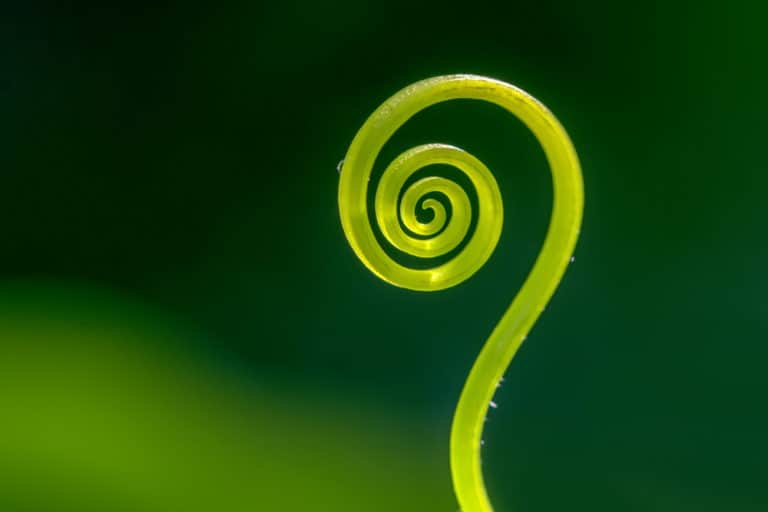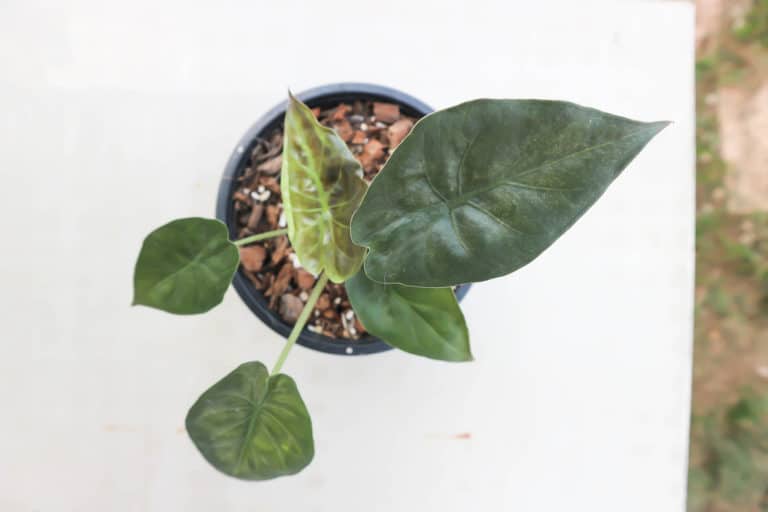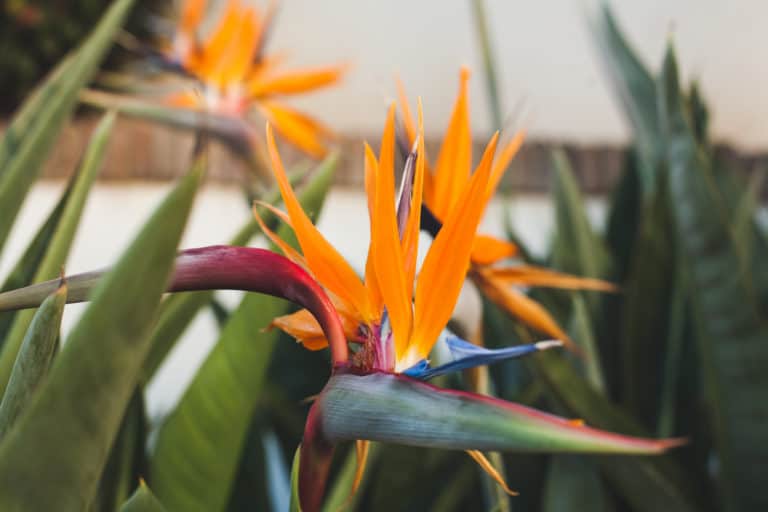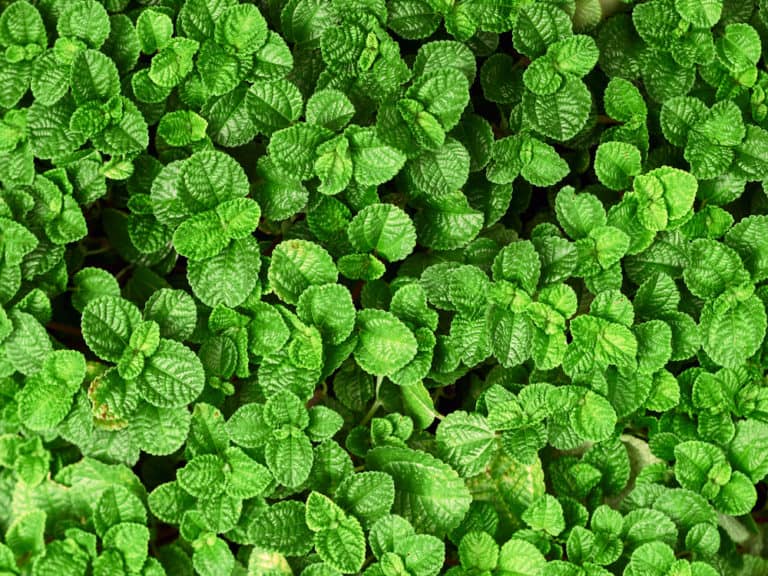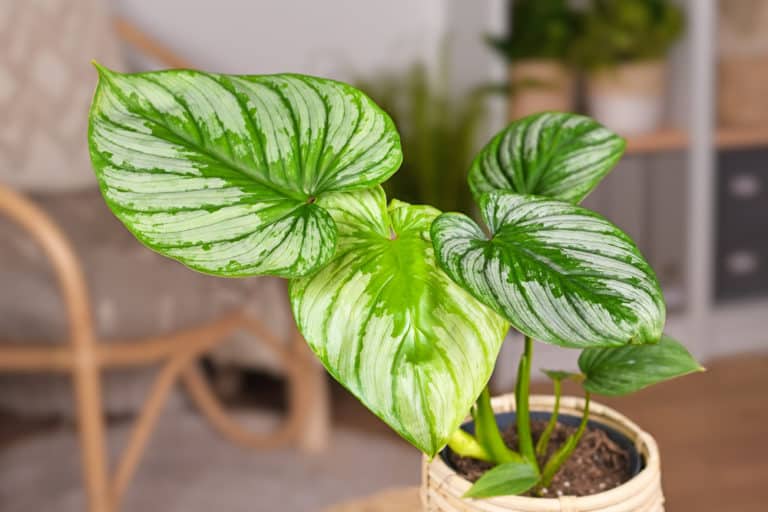Epipremnum Aureum ‘Njoy Pothos’ Care Guide (2024)
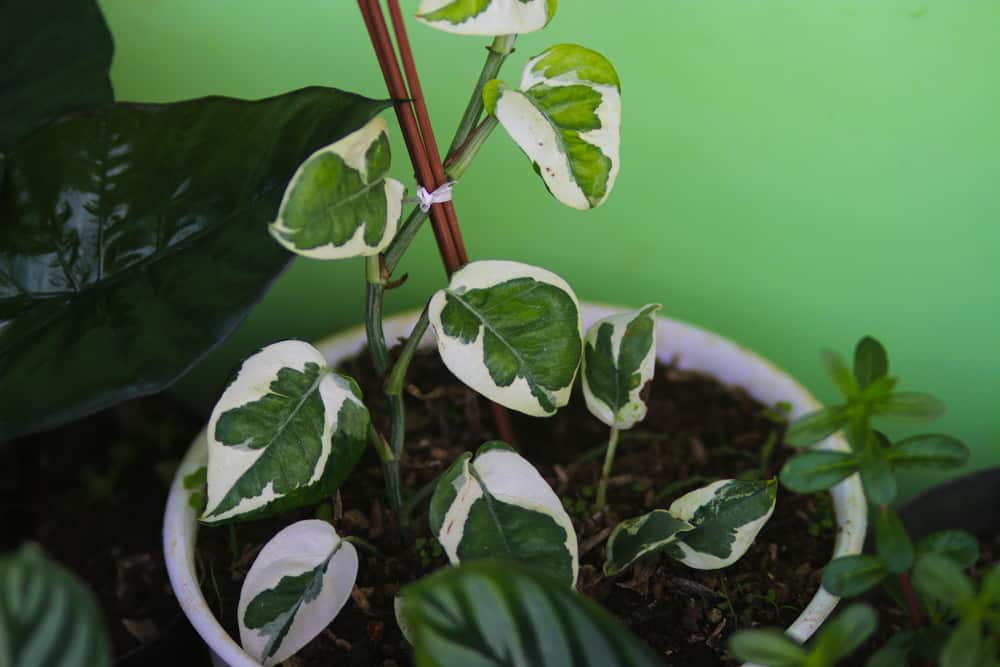
Njoy Pothos is a cultivar of the Marble Queen Pothos and has become very popular. Like all pothos, it’s one of the easiest plants to grow.
Epipremnum aureum N’Joy is a vining plant with striking white and green variegation on its leaves, making it a great addition to any indoor garden.
| Scientific Name | Epipremnum aureum ‘Njoy’ or Epipremnum pinnatum ‘Njoy’ |
| Common Name | Njoy Pothos |
| Light | Bright indirect sunlight |
| Watering | Weekly, water if the top half of the soil is dry |
| Temperature | 60 to 80ºF (18 to 30ºC) |
| Hardiness Zone | 10-11 |
| Humidity | 60-80% |
| Soil Type | Quick-draining |
| Soil pH | 6.1 to 6.5 (mildly acidic) |
| Fertilizing | A balanced feed once a month in spring and summer |
| Repotting | Every 2-3 years |
| Pruning | Spring and summer |
| Propagation | Root in water or soil |
| Toxicity | Toxic to humans and pets |
| Mature Size | 10-foot vine |
| Bloom Time | No flowers when grown indoors |
What’s Unique About Njoy Pothos?
Growing Njoy Pothos is remarkably easy, even for someone with no previous experience cultivating an indoor garden..
Native to the rainforests of French Polynesia in the South Pacific, any pothos plant will tolerate low light levels and prefers infrequent watering.
Interestingly, however, Njoy Pothos plant can also be grown indefinitely in water, such as a fish tank.
Like all members of the pothos family, Njoy Pothos plants are also remarkably effective at filtering contaminants such as benzene and formaldehyde from indoor environments.
The combination of the ease of maintenance, attractive foliage, and health benefits make Njoy Pothos a great choice for a home or office houseplant.
Njoy Pothos Care
While the pothos family of plants originates in the tropical rainforests of the South Pacific, it is very easy to enjoy pothos in your home.
Njoy Pothos plant care is simple: keep it warm, keep it out of the full sun, and don’t overwater.
With this guide to Njoy plant care, you should have no trouble getting this attractive vine to thrive.
Light
In the rainforests of French Polynesia, pothos vines grow in the shade of the tree canopy.
Thus, Njoy Pothos light requirements are for bright, indirect light, or 10,000-20,000 lux.
Njoy plant light needs can easily be met by keeping the plant close to a window in an east or north-facing room.
If all you have is a south or west exposure, find a spot out of the full sun. The stronger rays of the afternoon sun can damage Njoy Pothos foliage.
Njoy Pothos will tolerate lower light levels as well, and artificial lights such as those in an office will provide sufficient lux to keep them happy.
Watering
In the rainforest, pothos plants are used to the soil that drains quickly, leaving them in dry soil.
Thus, Njoy Pothos watering should only be done when the top half of the soil is dry.
Water Njoy Pothos by letting the pot soak until all the soil is moistened, and then empty the saucer of any water that remains. Never let the soil get waterlogged, as that will lead to fungal diseases such as root rot.
However, it’s also possible to eliminate any watering needs for your Njoy Pothos by growing it hydroponically with its roots in a fish tank.
Temperature
The ideal Njoy Pothos temperature range is 60 to 80ºF (18 to 30ºC), as it is a tropical native.
You should be easily able to provide this temperature for Njoy Pothos in any heated space, so don’t worry about using supplemental heating.
However, Njoy Pothos has limited temperature tolerance below 50ºF (10ºC), so keep it away from air conditioning vents that may blast out cooler air. Too-low temperatures may damage the leaves or trigger dormancy.
Njoy Pothos has no frost hardiness at all, so if you took your plant outdoors to enjoy some steamy summer weather, bring it in before temperatures fall.
Humidity
Pothos plants are used to a humidity level as high as 80% in their rainforest home. However,
Njoy Pothos humidity requirements are pretty flexible.
While the ideal humidity for Njoy plant is between 60-80%, even levels as low as 30% will not damage the plant.
In most homes, you will not need to provide supplementary sources of humidity. However, if the air is too dry, the leaves of your Njoy Pothos will start to look a little crispy around the edges.
It’s easy to spritz them every few days with a spray bottle. Use distilled water as the salts and chemicals in tap water can damage the foliage.
Soil
Njoy Pothos soil has to be well-draining as it will not tolerate sitting in wet soil. The pH level for Njoy plant should be 6.1-6.6, or mildly acidic.
A specialty aroid soil will not need any amendments to make it the perfect soil for Njoy plant. If you cannot find it, however, you can easily make your own soil mix.
Combine equal parts of potting soil, perlite, and peat moss for a well-draining, light mix that your Njoy Pothos will thrive in.
If you substitute a well-rotted compost for the potting soil, you won’t even have to fertilize it.
Fertilizer
It’s a good idea to use fertilizer for variegated Pothos Njoy for the most lush leaves possible.
You can use any indoor plant fertilizer as your Njoy Pothos fertilizer. A balanced fertilizer ratio of 10-10-10 will work very well.
If using a liquid fertilizer, dilute it to half the recommended strength and feed once a month in spring and summer. Do it when the soil is moist after watering.
If you used compost or added slow-release fertilizer granules when potting your Njoy Pothos, you will not need to do any additional feeding.
If you are growing your Njoy Pothos hydroponically in a fish tank, it will get its nutrients from the water.
Potting & Repotting
Since Njoy Pothos grows slowly, you will not need to repot more than every 2 or 3 years.
It’s time for Njoy Pothos repotting when roots start growing out of the drainage holes and the water runs right through when watering.
If it becomes rootbound, there will not be sufficient soil to hold even the limited moisture it needs to grow.
When repotting Njoy plant, move up one pot size, or at most 2 inches in diameter. Always ensure that it has good drainage holes.
Use fresh potting soil and water it well to help it settle into its new home.
Pruning
Njoy Pothos pruning is necessary to train the vine and maintain a tidy appearance as it sprawls. This should be done during the spring and summer growing season.
If you want a short, bushy plant, cut the end to encourage lateral growth. You should train it up a sphagnum moss pole to keep it growing upright.
However, if you need a long, trailing vine to wend its way across the top of your kitchen cupboards, just cut out any stems that get in the way.
When cutting Njoy plant, use sharp scissors and cut the stem just above a leaf node.
Of course, always trim out dead or damaged leaves.
Propagation
It’s very easy to propagate Njoy plant, and a great way to produce more plants to sell or give away.
Njoy Pothos propagation is usually done by taking stem cuttings and rooting them in water or soil.
Select stems at least 4 inches long with 2 or more leaf nodes. Cut with sharp scissors just below a node, and clean off all but the top leaves.
If you put them in a jar of water to root, change the water every few days.
You can also stick the cuttings into a pot or tray filled with moist potting soil. Water every few days and mist the cuttings.
Roots should develop within a few weeks. Plant them out in their own small pots.
Also, make sure to check out our in-depth pearls and jade Pothos plant care guide.
Common Problems of Njoy Pothos
There are very few Njoy Pothos problems, but you should stay alert for pests and diseases that could harm your plant.
Most problems with Njoy plant are caused by poor growing conditions.
The leaves of your Njoy Pothos are the best indicator of plant health. If they look damaged or sick, take the necessary steps to eliminate the cause.
Pests
Njoy Pothos pests include spider mites and mealybugs, which love to feast on the plant’s sap.
Examine the leaves of your Njoy plant once a month to see if there are any bugs lurking, and use simple techniques to control them.
Mealybugs are the most likely insect to turn up. Look for cottony tufts on the underside of leaves. They can be removed using a cotton ball soaked in rubbing alcohol. Carefully wipe all surfaces of the leaves and stems.
Spider Mites leave little yellow and white spots on the leaves and may spin sticky webs. Spray them with insecticidal soap.
Diseases
Most Njoy Pothos diseases can be prevented by not overwatering the plants. However, even if your Njoy plant has developed a fungal disease, you should be able to save it.
If leaves are turning yellow with mushy stems, your Njoy Pothos has root rot. Remove the plant from its pot and trim out all black roots and affected foliage. Repot it in fresh soil and cut back on watering in the future.
If the leaves are developing yellow spots that turn brown or black, a fungal disease is spreading and it will have to be treated. Cut out all affected leaves where the stem meets the main vine, and dispose of them in the garbage.
Spray with a fungicide to prevent any further spread.
Growing Problems
If your Njoy Pothos has some growing problems, do not give up on your sick plant! Review the optimal growing conditions for this rainforest native, and provide it with what it needs to thrive.
If leaves are turning brown and crispy, there are a few possibilities.
If the soil is completely dry, plunge the pot into the water to become uniformly moist. Let all excess water drain out.
Your Njoy Pothos may be getting too much sun. Move it out of direct light or shade it with a light curtain.
Yellowing leaves might result from too little light or too much water. Provide it with a better light source and cut back on watering.
Toxicity of Njoy Pothos
Njoy plant is a pothos, which means that it’s toxic to all mammals, including humans and most household pets.
Like all members of the araceae family, its toxicity is caused by the calcium oxalate crystals found in all parts of the plant.
While ingesting Njoy Pothos is rarely fatal, it can cause painful and potentially serious symptoms.
For Humans
Njoy Pothos is toxic to humans, but you would have to eat a very large quantity for serious complications to develop.
However, children may be more susceptible, as they are more likely to try eating anything that looks interesting.
If a child has eaten some of your Njoy Pothos and complains of some pain around their mouth, clean it thoroughly inside and out with a cool, damp washcloth.
If their tongue becomes swollen or they have difficulty breathing, that is a more serious situation and you should take them to emergency immediately.
If you have sensitive skin, the sap can cause irritation, so take precautions.
For Pets
Njoy Pothos is toxic to pets, so you will need to take sensible precautions to include this in a home with cats, dogs, or rabbits.
If your pet has eaten some of your Njoy Pothos plant, and is drooling, vomiting, or wheezing, take it to the veterinarian immediately.
You should be able to easily find a spot in your home where your pets will be safe from Njoy Pothos — and vice-versa.
This vining plant is perfect for a hanging planter, with the ends trimmed well above pet level. It also grows very well trained along a high shelf or above kitchen cupboards.
Njoy Pothos Appearance
The attractive Njoy Pothos appearance has made it a very desirable houseplant since it was first patented in 2007.
Its variegated green and white leaves make a big splash, and the vining habit of Njoy Pothos lends itself to a variety of different locations in a home or public setting.
Foliage
The foliage of Njoy Pothos is definitely the main attraction of this tropical vine.
Each leaf is splashed with irregular white patches against a bright green backdrop, with yellow highlights and touches of cream.
The leaves are heart-shaped and can reach 6 inches in length when mature. Since this is an evergreen plant, the leaves will look good even during the dormant period in winter.
They have a glossy texture which is best maintained by wiping them down with a damp cloth once a month to remove dust. If you have an insect problem, adding neem oil to the wipe will help keep bugs away.
Flowering
Njoy Pothos plants rarely if ever flower in cultivation, so it’s best to assume that you will never see your Njoy Pothos flowering.
Blooming is only possible if Pothos has matured, and only the juvenile vine is grown indoors as a potted plant. Njoy Pothos has been cultivated for such a short period that there is no information about what a flower would look like.
If you have any chance of seeing a Njoy flower, it would be in a tropical climate where it is able to grow to its mature size when planted in the ground year-round.
However, Njoy Pothos is such a beautiful foliage plant you will not miss those non-existent flowers.
Size and Growth
When grown indoors as a potted plant, the mature size of Njoy Pothos is about 10 feet. It has a slow growth rate so it may take up to 10 years to reach that length.
Outdoors in a tropical setting, Njoy Pothos has the potential to reach as much as 30 feet in length.
Whatever its length, the vine can end up with a spread of up to 1 meter. You can encourage outward spread by cutting the growing tip to focus on a shorter, bushier plant.
If it is staked with a sphagnum moss pole, it will grow upright or can trail from a hanging basket or high shelf.
Njoy Pothos Fragrance
There is no Njoy Pothos fragrance. The colorful foliage has no scent, and it rarely if ever flowers.
Combined with its almost non-existent maintenance tasks, this makes Njoy Pothos ideal in public spaces where fragrance is discouraged or forbidden, such as medical centers or nursing homes.
Even in a shared office, a fragrance-free plant is a considerate choice when others may be sensitive.
In a small studio apartment, a strongly-scented plant might be overwhelming, so Njoy Pothos is the perfect plant, especially since it can be trained in such a way as to take up very little valuable floor space.
Suggested Uses for Njoy Pothos
Njoy Pothos is a versatile and easy-going houseplant with a lot of potential in both public and private spaces.
Quite aside from its good looks, it can clear toxins such as formaldehyde out of indoor air. Keeping one in your bedroom can be a healthy choice.
Its vining habit lends itself to being used in a variety of ways, even in the smallest studio apartment. You could train one or more up stakes or a trellis to screen off a sleeping nook for added privacy.
You can also move Njoy Pothos outdoors in summer to create a tropical feel on your patio or deck, as long as you remember to bring it back in before fall frosts.
FAQ
What is Njoy Pothos?
Njoy Pothos is a vining evergreen perennial plant that was first patented in 2007. It is a cultivar of Marble Queen Pothos and is grown as a houseplant.
How to identify Njoy Pothos?
Njoy Pothos has a vining growth habit, with 4-6 inch glossy heart-shaped leaves growing on slender stems and patterned with white and green splotches on both sides.
How to care for Njoy Pothos?
Njoy Pothos is very easy-going as a houseplant but will do best in bright, indirect light, humidity above 50%, and temperatures between 60 to 80ºF (18 to 30ºC).
How to grow Njoy Pothos indoors?
Njoy Pothos can be grown indoors as a staked plant, in a hanging basket with trailing vines, or can be trained along a high shelf or kitchen cabinets.
How to grow Njoy Pothos outdoors?
Njoy Pothos can be planted in the ground in zones 10 and above. In temperate zones, it can be moved out to a shaded patio in summer.
How fast does Njoy Pothos grow?
Njoy Pothos can grow up to a foot in length in a year, taking 10 years to reach its full size when grown indoors as a juvenile plant.
How tall does Njoy Pothos grow?
Njoy Pothos will reach a full length of about 10 feet when grown indoors. If planted in the ground in a tropical climate, it could be 30 feet long.
How to make Njoy Pothos grow faster?
Njoy Pothos will grow its fastest when provided with ideal growing conditions of warm temperatures, high humidity, infrequent watering, and regular fertilization in bright, indirect light.
How to stake Njoy Pothos?
Since Njoy Pothos is a vine, it will grow best when supported. It can be staked with a sphagnum moss pole to give its aerial roots something to grab onto.
How to pot Njoy Pothos?
Njoy Pothos should be potted in a container with good drainage holes, in loose, porous soil that will not stay too wet. Repot every 2 to 3 years.
How to revive Njoy Pothos?
Njoy Pothos appreciates dry soil but do not let it dry out completely. If it does, plunge it into the water until the soil is uniformly moistened.
Why is my Njoy Pothos dying?
Your Njoy Pothos may be suffering from fungal disease or insect attack. Examine the leaves carefully to determine the cause and follow instructions to cure it.
Why is my Njoy Pothos drooping?
Your Njoy Pothos may be too dry or too wet. If the soil is dry, water it thoroughly, and if it’s too wet, replace the soil with a fresh, porous mix.
How cold can Njoy Pothos tolerate?
Njoy Pothos prefers temperatures of 60 to 80ºF (18 to 30ºC). Temperatures below 50ºF (10ºC) will inhibit growth, and anything below 35ºF (2ºC) can kill it.
How to get rid of pests on Njoy Pothos?
Njoy Pothos pests such as spider mites and mealybugs can usually be controlled by applying rubbing alcohol or spraying solutions of insecticidal soap or neem oil.
Is Njoy Pothos toxic to cats?
Yes, Njoy Pothos is toxic to cats. Keep your plants out of their reach, but if they do eat some and start vomiting or wheezing, take them to the veterinarian.
Is Njoy Pothos toxic to dogs?
Yes, Njoy Pothos is toxic to dogs. If your dog eats some of the foliage and starts wheezing, drooling excessively, or vomiting, take him to the vet.
Is Njoy Pothos toxic to children?
Yes, Njoy Pothos is toxic to children. Clean any plant material from around their mouth, and if they have a swollen tongue or difficulty breathing, take them to the emergency room.
Is Njoy Pothos toxic to humans?
Yes, Njoy Pothos is toxic to humans. Some people have a sensitivity to the sap, so wear gloves when handling it, and rinse off any sap that gets on your skin.
Does Njoy Pothos have a scent?
No, Njoy Pothos does not have a scent. The foliage is fragrance-free, and it rarely if ever flowers. Use it where a strong fragrance is not desired.

